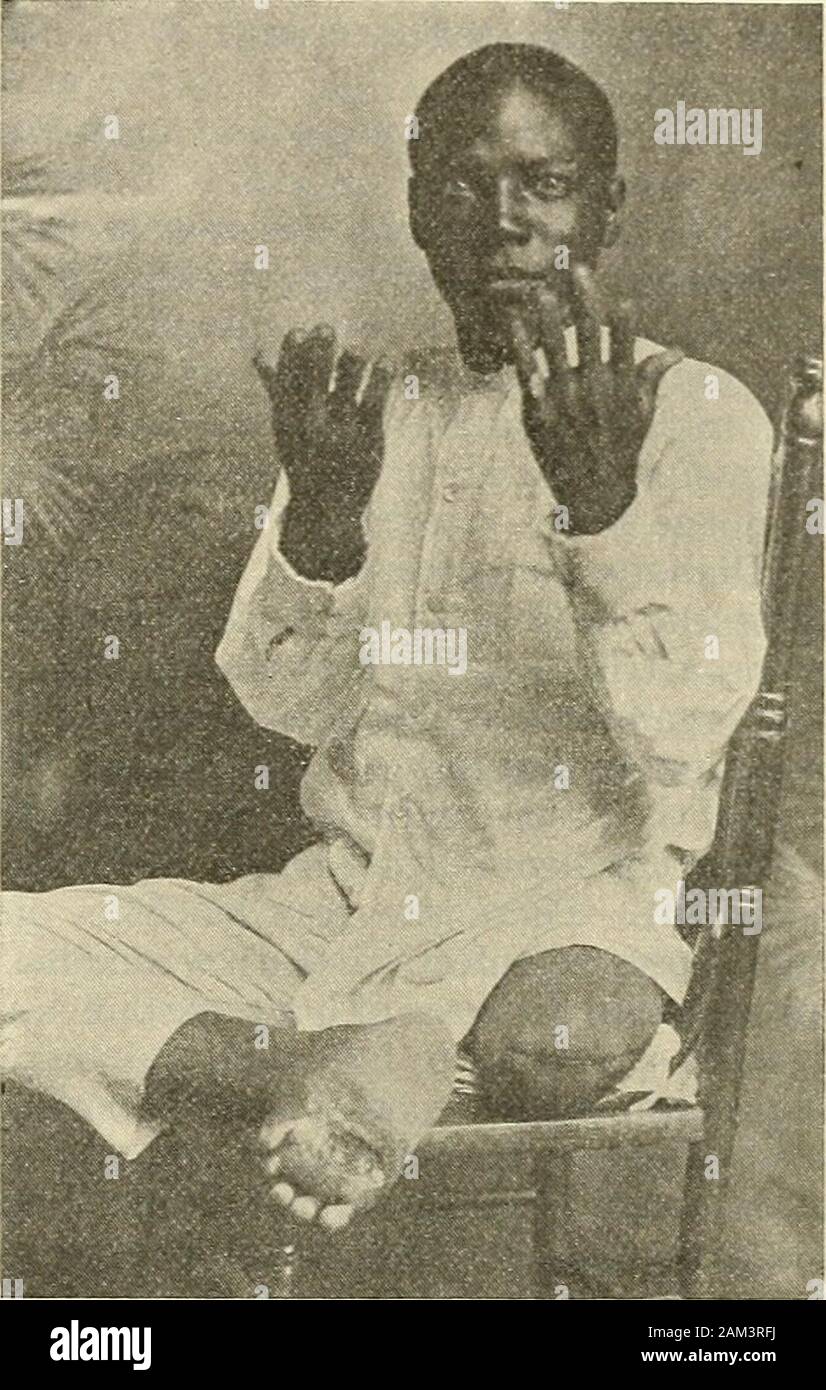Modern surgery, general and operative . Tnmetrical. Certain it is that many cases whichwe formerly regarded as clear cases of Ra^mauds disease of the lower ex-tremities develop gangrene, due either to obliterative endarteritis or angio-thrombosis (see page 165). In such cases there is usually ^dolent pain for weeksor months before gangrene begins. When gangrene is about to occur in Ray-nauds disease the local asph^^a at that point deepens, anesthesia becomescomplete, and the part blackens and feels cold to the touch. The epidermis maybe raised into blebs at the margin of the gangrene, which bl

Image details
Contributor:
The Reading Room / Alamy Stock PhotoImage ID:
2AM3RFJFile size:
7.1 MB (432.4 KB Compressed download)Releases:
Model - no | Property - noDo I need a release?Dimensions:
1260 x 1983 px | 21.3 x 33.6 cm | 8.4 x 13.2 inches | 150dpiMore information:
This image is a public domain image, which means either that copyright has expired in the image or the copyright holder has waived their copyright. Alamy charges you a fee for access to the high resolution copy of the image.
This image could have imperfections as it’s either historical or reportage.
Modern surgery, general and operative . Tnmetrical. Certain it is that many cases whichwe formerly regarded as clear cases of Ra^mauds disease of the lower ex-tremities develop gangrene, due either to obliterative endarteritis or angio-thrombosis (see page 165). In such cases there is usually ^dolent pain for weeksor months before gangrene begins. When gangrene is about to occur in Ray-nauds disease the local asph^^a at that point deepens, anesthesia becomescomplete, and the part blackens and feels cold to the touch. The epidermis maybe raised into blebs at the margin of the gangrene, which blebs rupture andexpose dry surfaces. A line of demarcation forms, and the necrosed area is re-moved as a slough. Widespread gangrene from pure Raynauds disease is rare;there is not often an extensive area involved—rather a small superficial spot.Small areas are usually recovered from if not upon the lower extremity.. Fig. 92, —RajTiauds gangrene. Patient has lostmost of the terminal phalanges of the fingers and alsothe left leg. Right leg was amputated soon after thispicture was taken. (Patient of Dr. T. E. Wanna-maker, Jr., of Cheraw, S. C.) 174 Mortification, Gangrene, or Sphacelus Treatment of Raynauds Disease and of Raynauds Gangrene.—If an indi-vidual suffers from attacks of Raynauds disease, every effort should be madeto improve the general health and to avoid chilling the surface of the body.During the attack employ gentle massage, place the extremity in warm water, and, if pain is severe, give morphin hypodermatically. Amyl nitrite is withoutvalue in this condition. When attacks of Raynauds disease are so severe asto threaten gangrene, put the patient to bed; if the feet are attacked, elevatethe legs sHghtly, wrap the affected extremities in cotton-wool, and applywarmth. If the hands are affected, wrap them in cotton-wool, elevate themslightly, and apply warmth. Massage is useful. Arteri